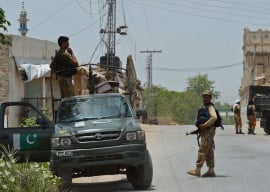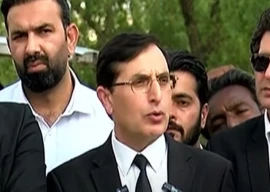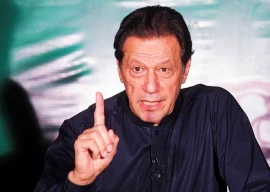
A big chunk of the education budget is spent on recurrent heads, such as paying salaries, instead of improving quality, said Economic Survey 2010-11 released here on Thursday.
The survey said that additional funds “must” be allocated for teachers’ trainings, curriculum development, supervision and monitoring, among others.
According to the latest Pakistan Labour Force Survey 2009-10, the overall literacy rate (age 10 years and above) is 57.7% (69.5% for men and 45.2% for women) compared to 57.4 percent (69.3% for men and 44.7 percent for women) in 2008-09.
The data shows that literacy remains higher in urban areas (73.2 %) than in rural areas (49.2 %). However, the rural-urban and male-female disparity seems to be reducing.
Province-wise, Punjab is the most literate at 59.6%, followed by Sindh at 58.2%, Balochistan at 51.5% and Khyber-Pakhtunkhwa at 50.9%. The literacy rate of Punjab and Khyber-Pakhtunkhwa improved considerably during 2008-09 and 2009-10, according to the report.
A total of 157,360 primary schools with 466,451 teachers are operating in Pakistan. The enrolment in primary schools increased from 18.468 million in 2008-09 to 18.756 million in 2009-10 and is estimated to increase by a further 1.4% in 2010-11.
Similarly, 41,330 middle schools with 331,254 teachers are operating in Pakistan. The enrolment in 2009-10 was 5.501 million, compared to 5.414 million in 2009-10. The enrolment is expected to increase by 0.4% in 2010-11.
There are 24,792 secondary schools with 446,490 teachers in Pakistan. The enrolment increased from 2.556 million in 2008-2009 to 2.581 million in 2009-10. In 2010-11, the enrolment is estimated to increase by 2.9%.
The enrolment in the 3,323 higher secondary and inter-colleges rose from 1.07 million in 2008-09 to 1.165 million in 2009-10. The enrolment is expected to grow to over 1.25 million in 2010-11.
Similarly, the survey expects more than 600,000 students to enrol in degree colleges in 2010-11 against 542,381 in 2009-10. There are 1,439 degree colleges in Pakistan with 30,753 teachers. The higher education enrolment is expected to increase to over 1.1 million in 2010-11, compared to 935,596 in 2009-10.
Three new universities were established during 2009-10, bringing the total number of public and private universities in the country to 132, with 57,780 teachers.
Due to continued financial vulnerabilities, the government reduced Higher Education Commission’s development budget from Rs11.3 billion to Rs9.2 billion in 2010-11.
Published in The Express Tribune, June 3rd, 2011.



















1713889672-1/Plastic-waste-(2)1713889672-1-270x192.webp)























COMMENTS (1)
Comments are moderated and generally will be posted if they are on-topic and not abusive.
For more information, please see our Comments FAQ